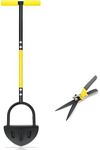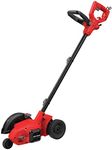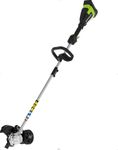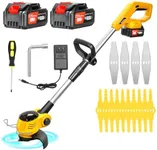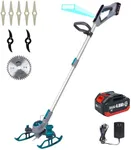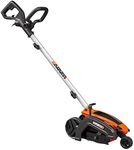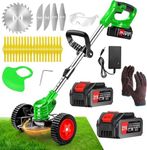Buying Guide for the Best Manual Garden Edger
Choosing the right manual garden edger can make a significant difference in maintaining a neat and well-defined garden. A manual garden edger is a tool used to create clean, crisp lines between different areas of your garden, such as between the lawn and flower beds or along walkways. When selecting a manual garden edger, it's important to consider several key specifications to ensure you get a tool that meets your needs and is comfortable to use.Blade MaterialThe blade material of a manual garden edger is crucial because it determines the tool's durability and cutting efficiency. Common materials include stainless steel, carbon steel, and tempered steel. Stainless steel blades are resistant to rust and corrosion, making them ideal for wet conditions. Carbon steel blades are very sharp and durable but may require more maintenance to prevent rust. Tempered steel blades are heat-treated for extra strength and durability. Choose a blade material based on your garden conditions and how often you plan to use the edger.
Blade ShapeThe shape of the blade affects how the edger cuts through the soil and grass. Flat blades are great for creating straight edges, while rounded or half-moon blades are better for curved edges and more intricate designs. If your garden has a lot of straight lines, a flat blade might be the best choice. For gardens with more curves and decorative edges, a rounded blade will provide better results.
Handle LengthThe handle length of a manual garden edger impacts your comfort and ease of use. Longer handles allow you to work without bending over too much, which can reduce back strain. Shorter handles provide more control and precision but may require more bending. Consider your height and physical comfort when choosing the handle length. If you have back issues or prefer to work standing up, opt for a longer handle. For more detailed work, a shorter handle might be more suitable.
Handle MaterialThe material of the handle affects the tool's weight and comfort. Common handle materials include wood, fiberglass, and metal. Wooden handles are traditional and provide a good grip but can be heavier. Fiberglass handles are lightweight and durable, offering a good balance of strength and comfort. Metal handles are very strong but can be heavier and may become uncomfortable during extended use. Choose a handle material that feels comfortable in your hands and suits the duration and intensity of your gardening tasks.
FootplateA footplate on a manual garden edger allows you to apply extra force with your foot, making it easier to cut through tough soil and grass. This feature is especially useful for larger gardens or areas with compacted soil. If you have a small garden with soft soil, a footplate may not be necessary. However, for larger or more challenging areas, a footplate can significantly reduce the effort required to achieve clean edges.
WeightThe weight of the manual garden edger affects how easy it is to maneuver and use for extended periods. Lighter edgers are easier to handle and less tiring to use, but they may not be as durable or effective on tough soil. Heavier edgers are more robust and can cut through tougher soil more easily, but they can be tiring to use for long periods. Consider your physical strength and the type of soil in your garden when choosing the weight of your edger. If you have a small garden with soft soil, a lighter edger may be sufficient. For larger gardens with tougher soil, a heavier edger might be more appropriate.



